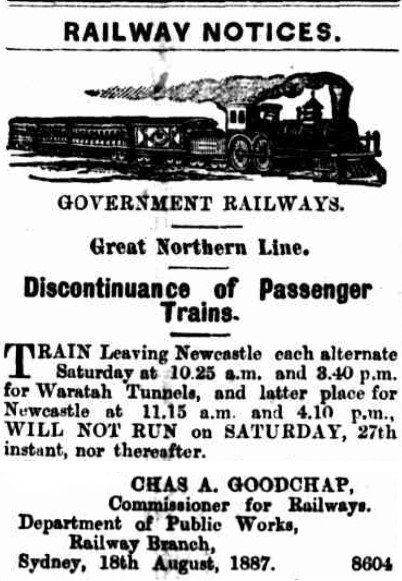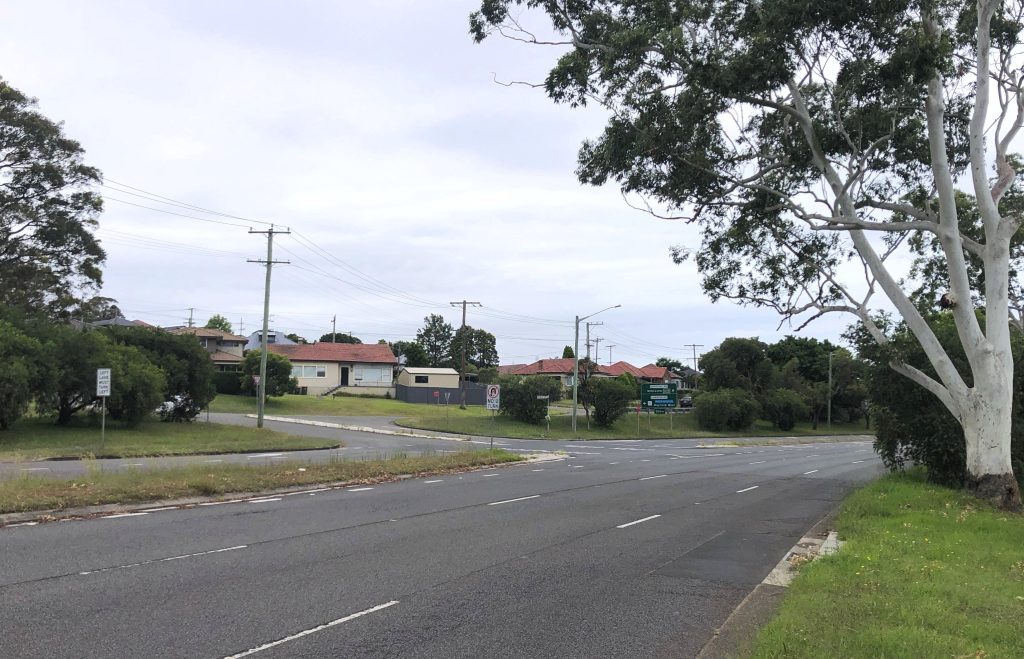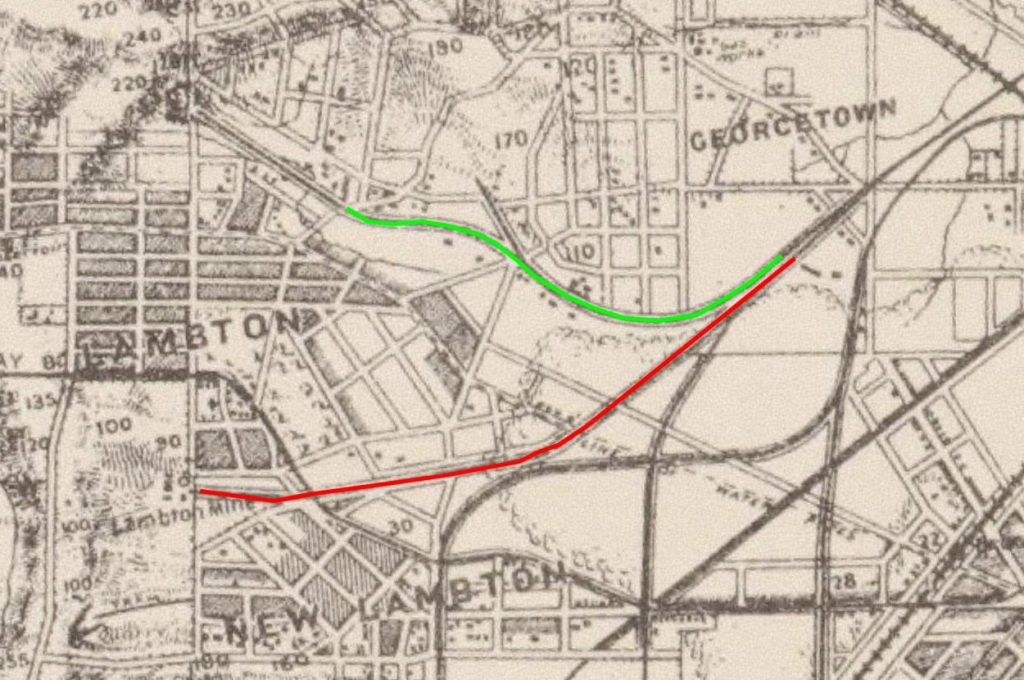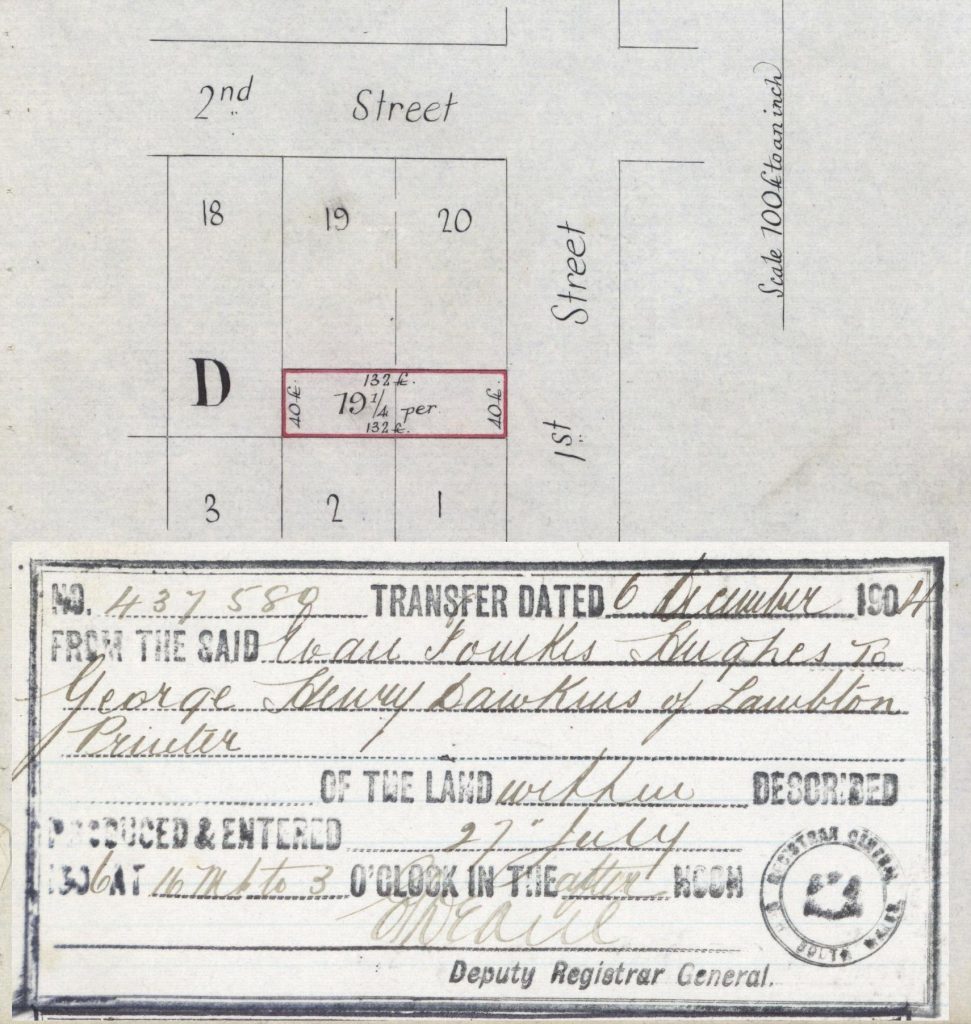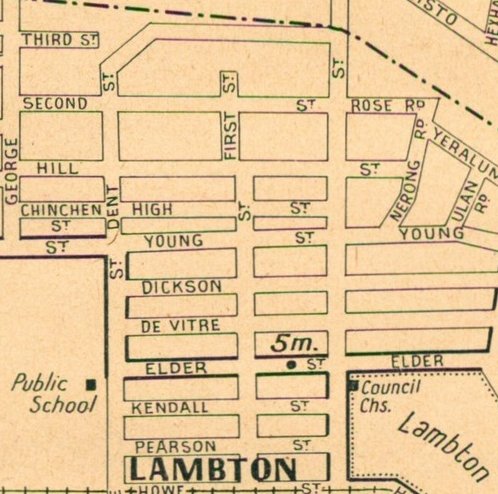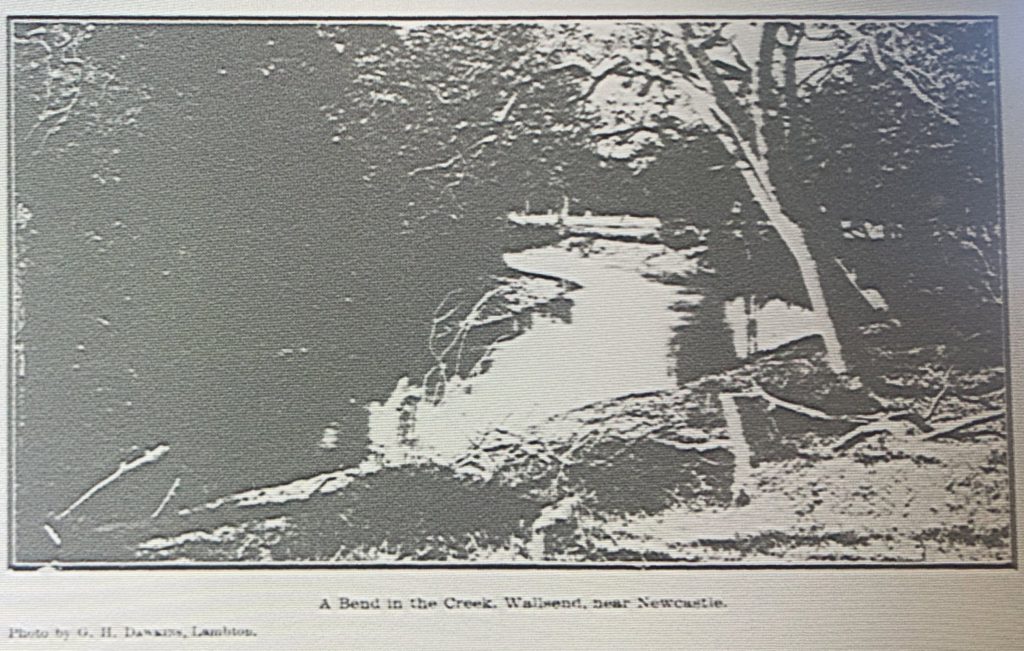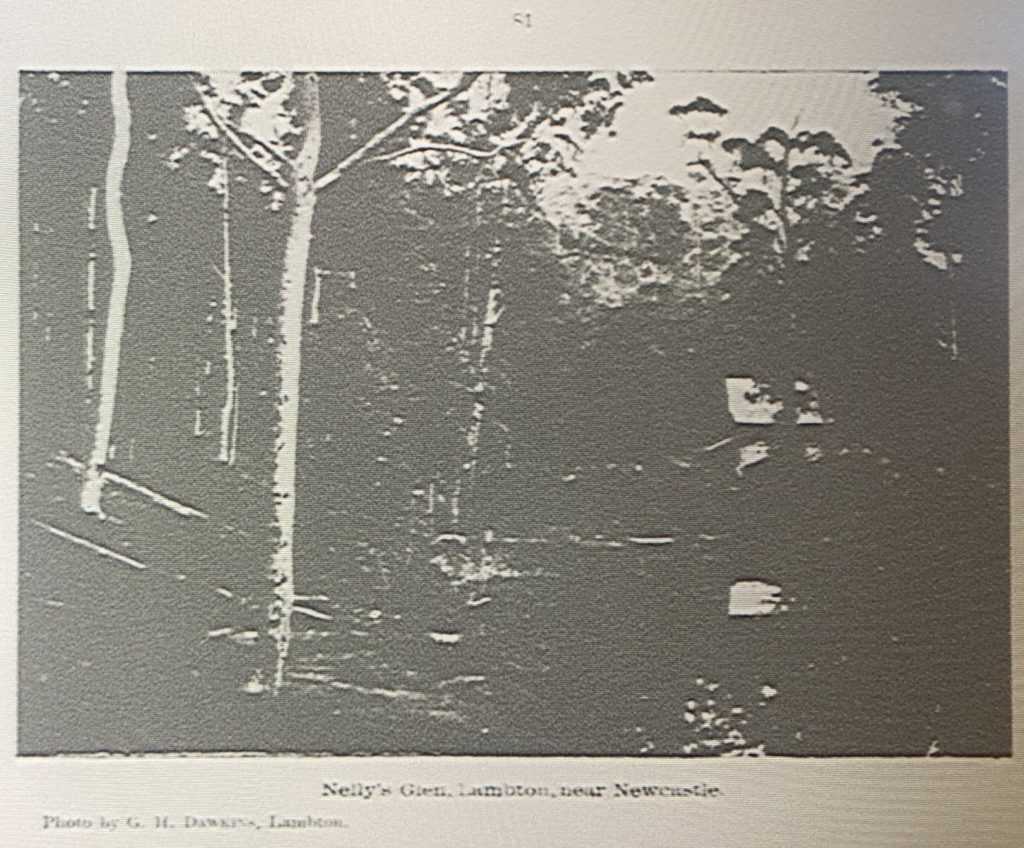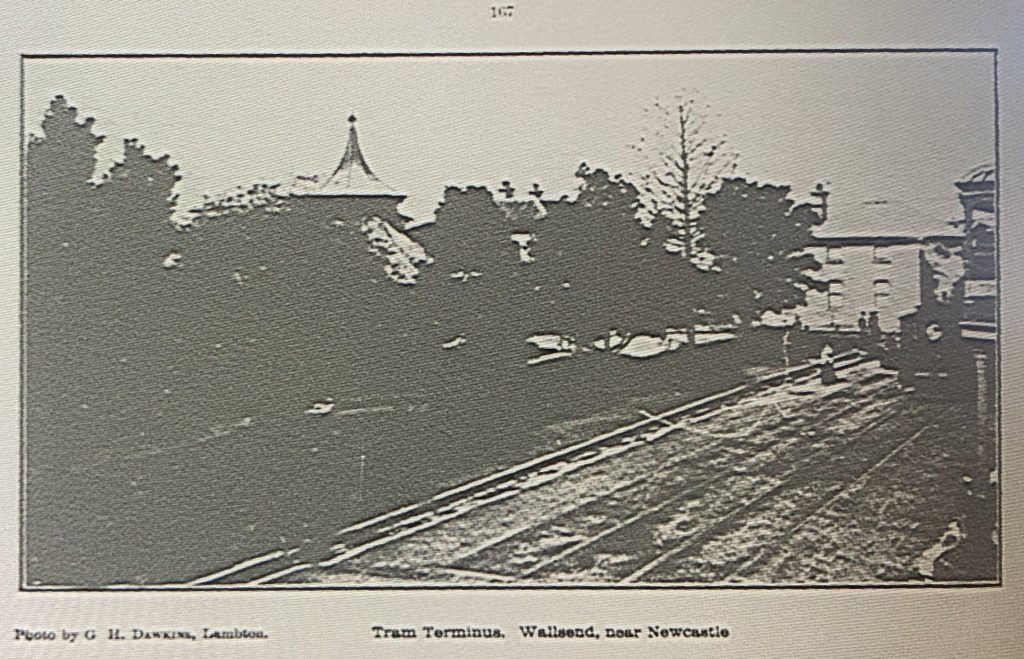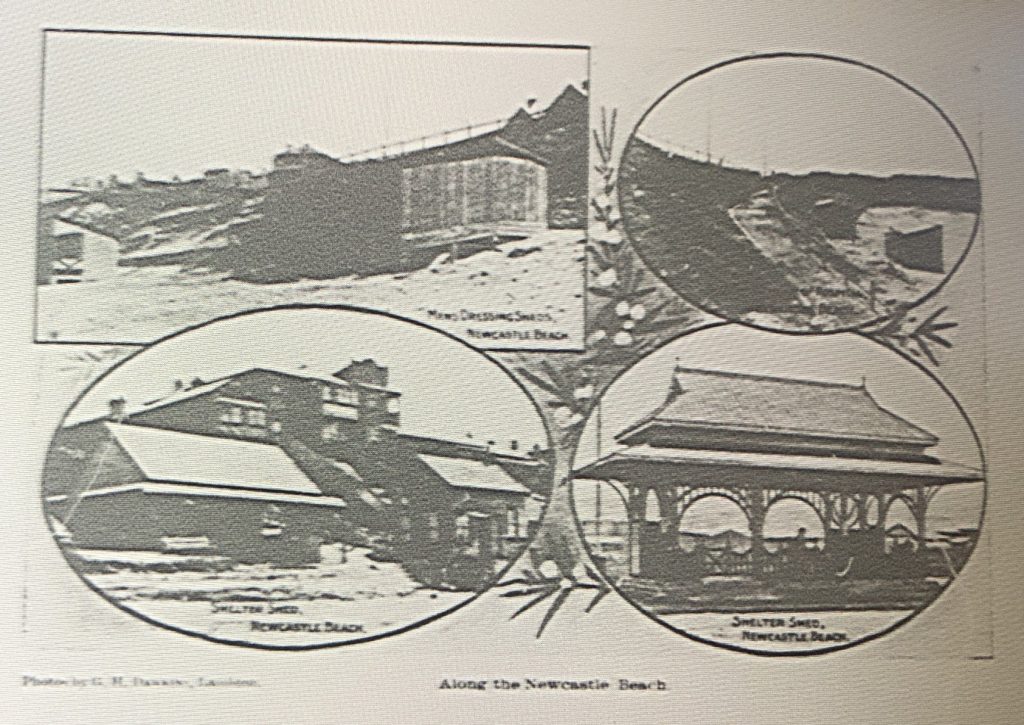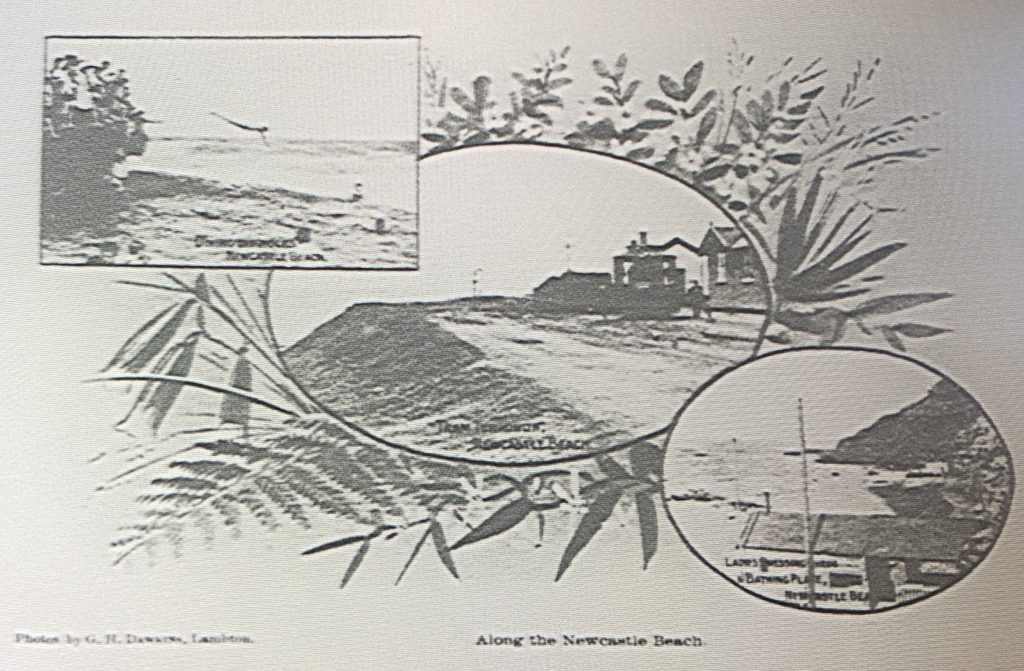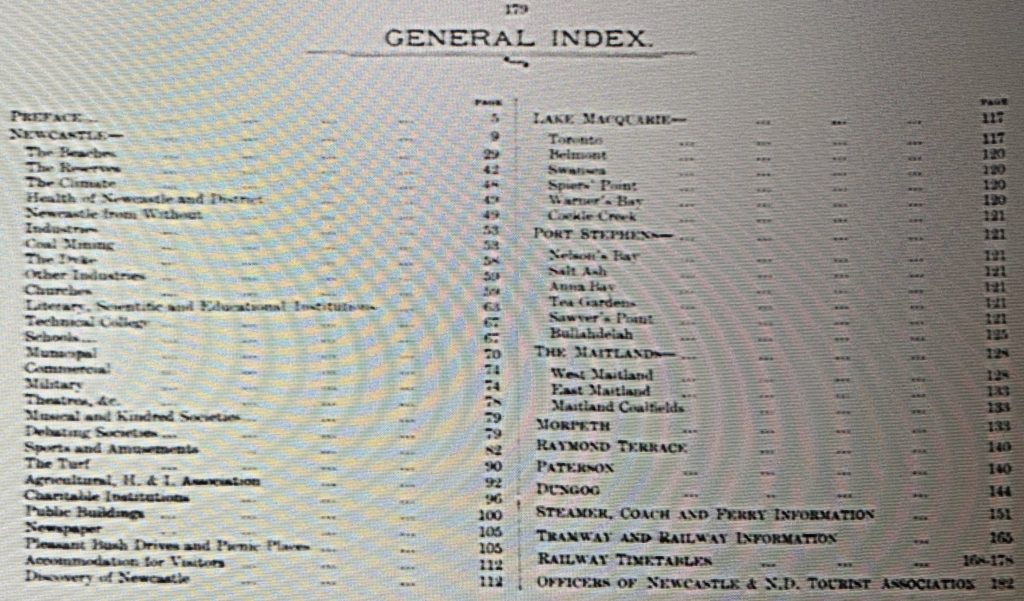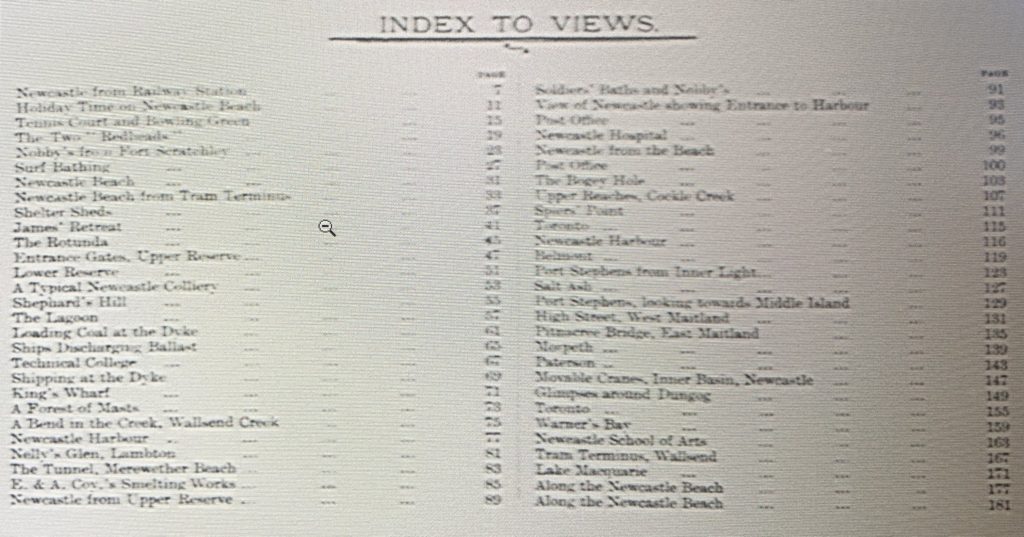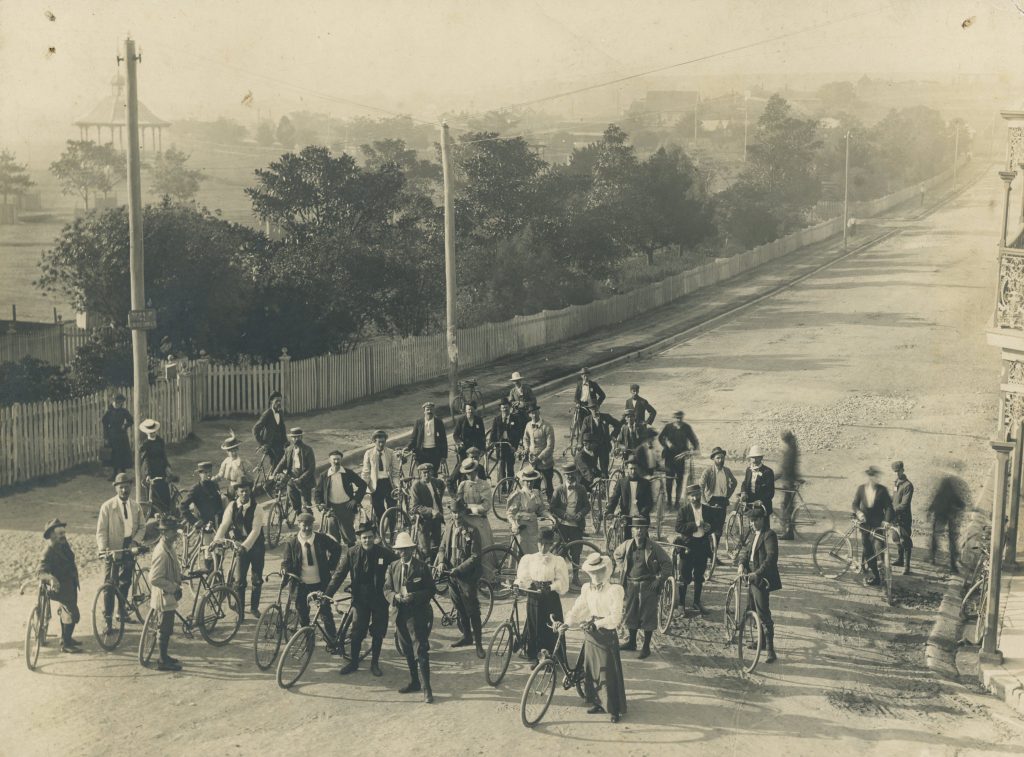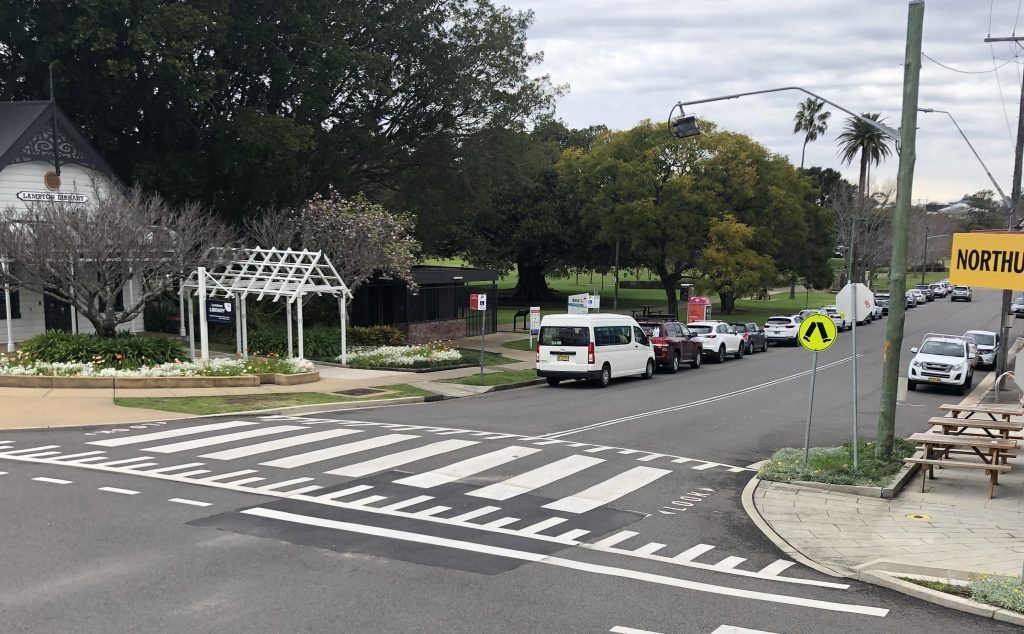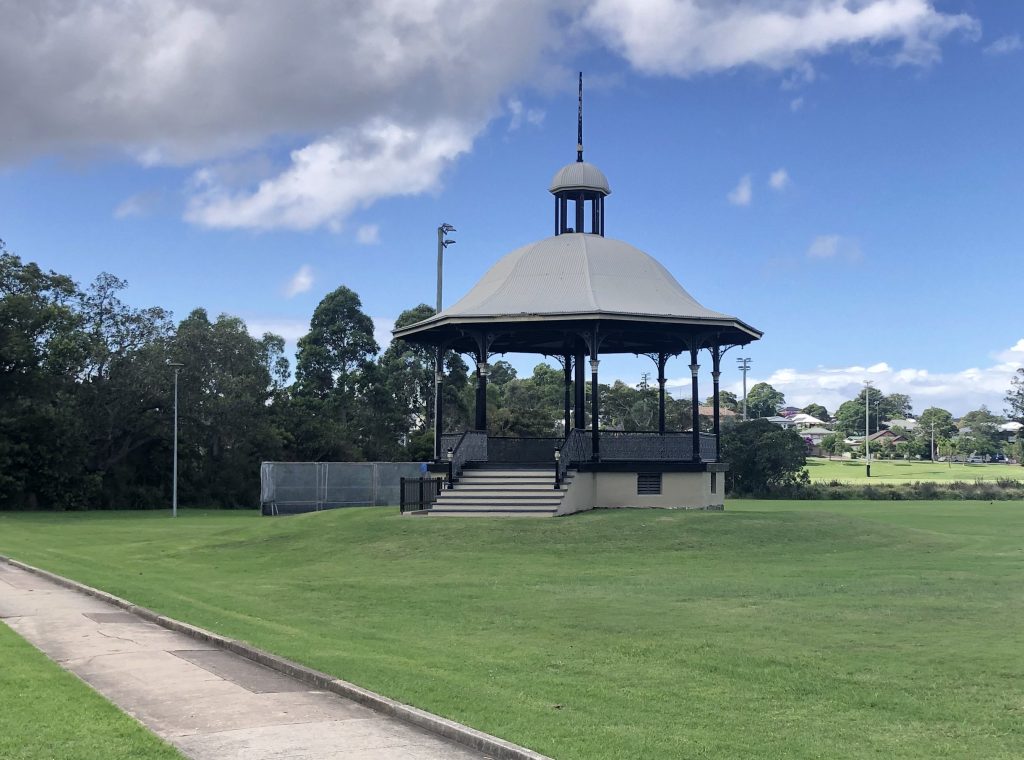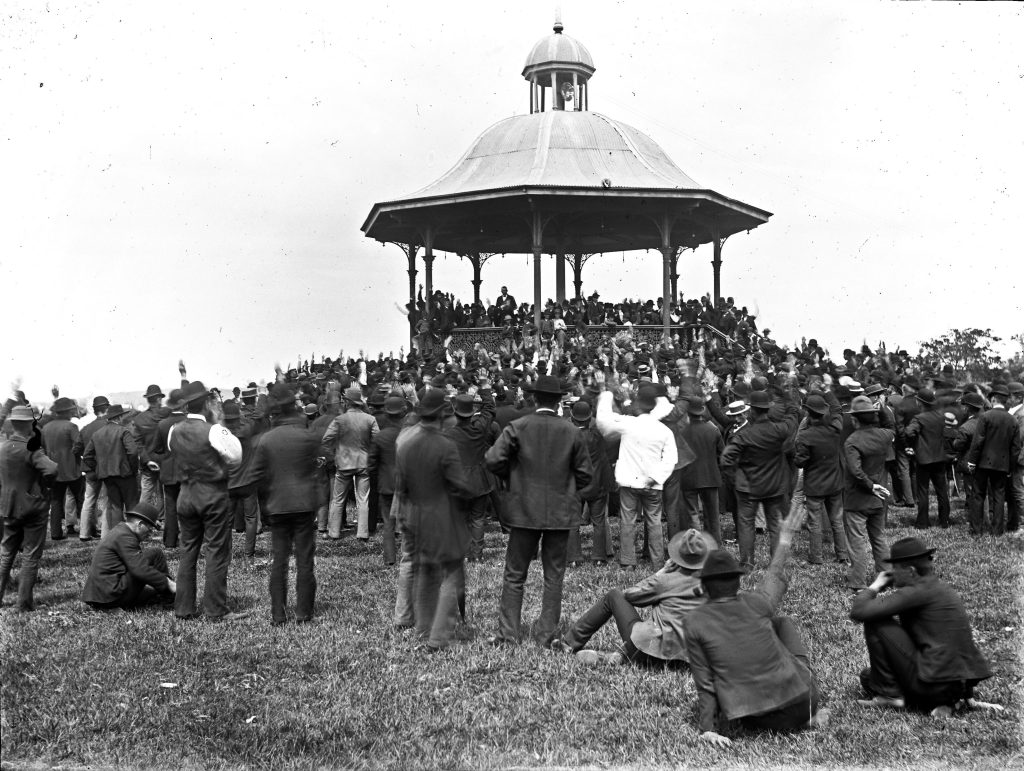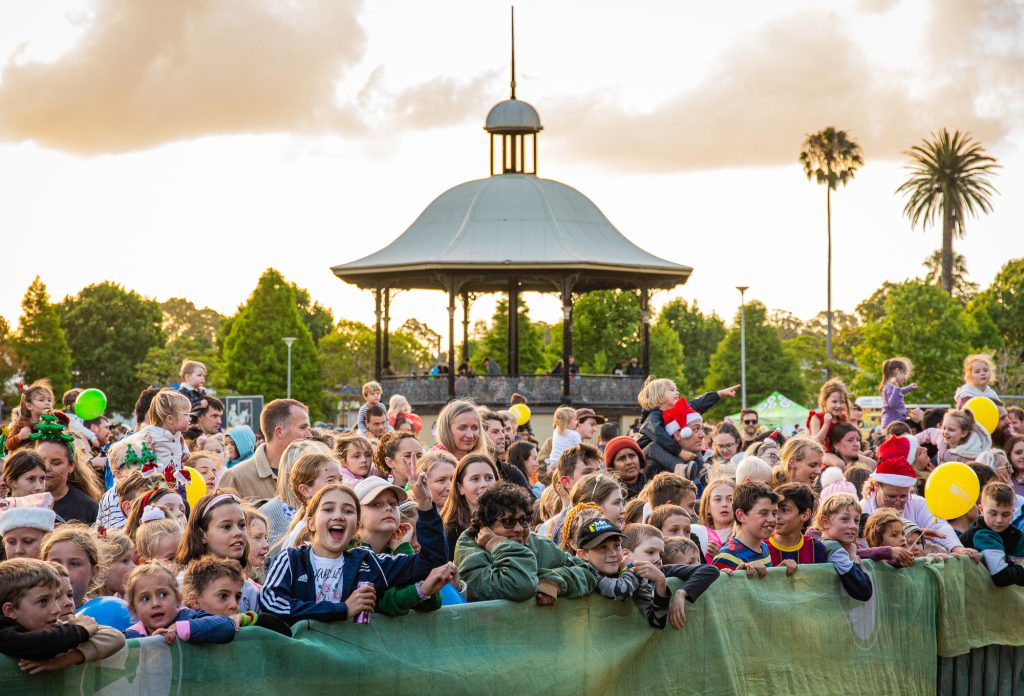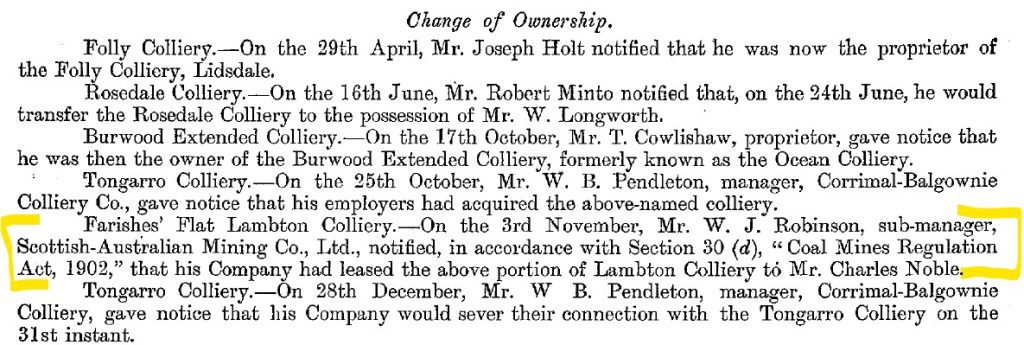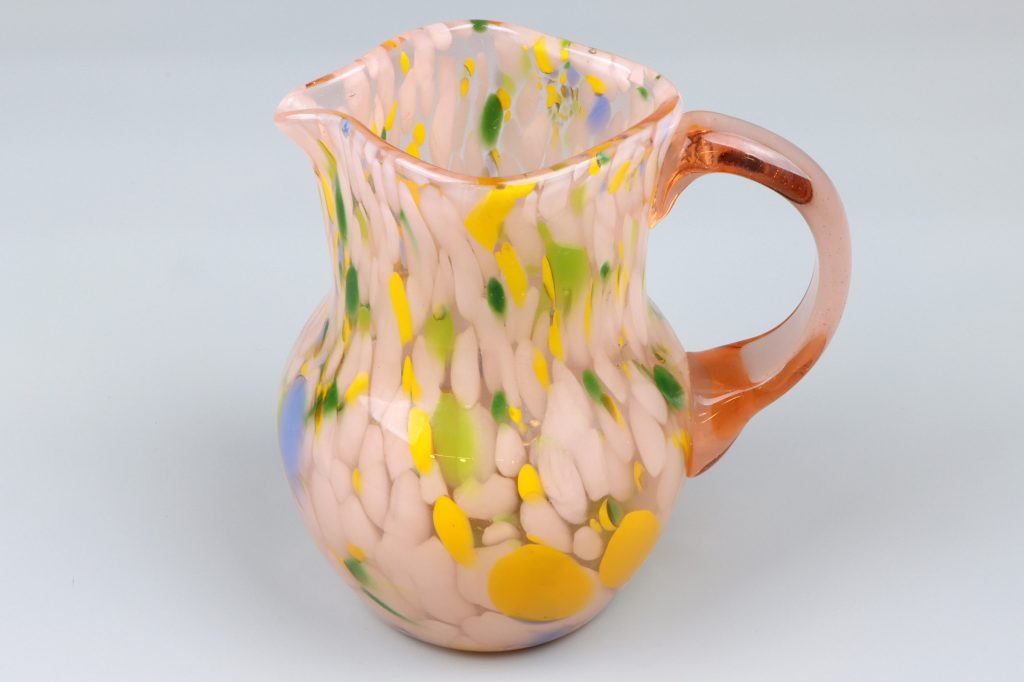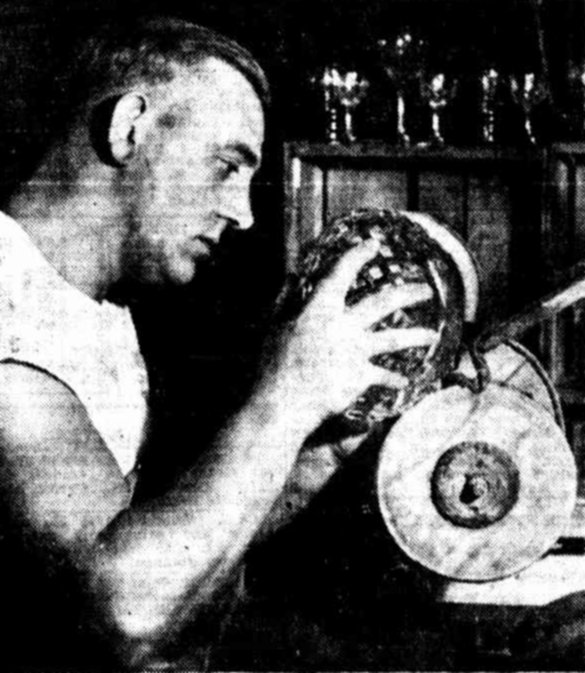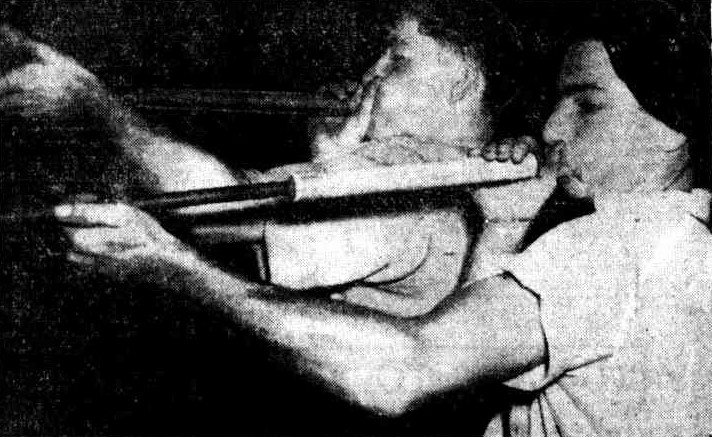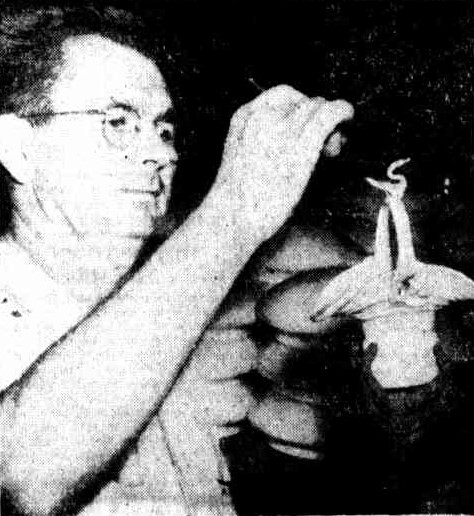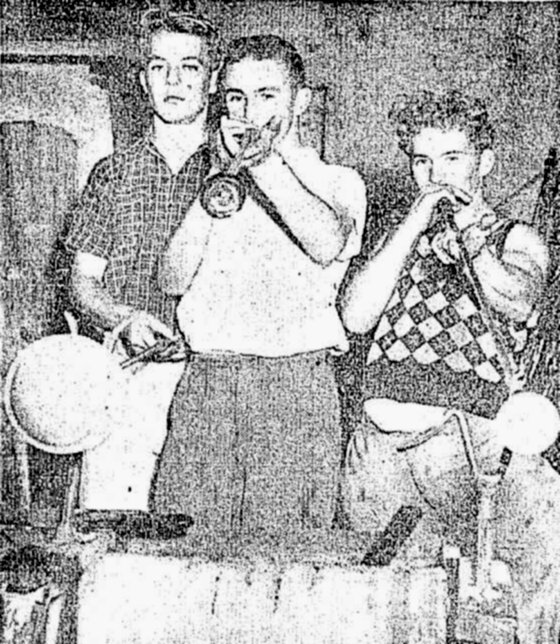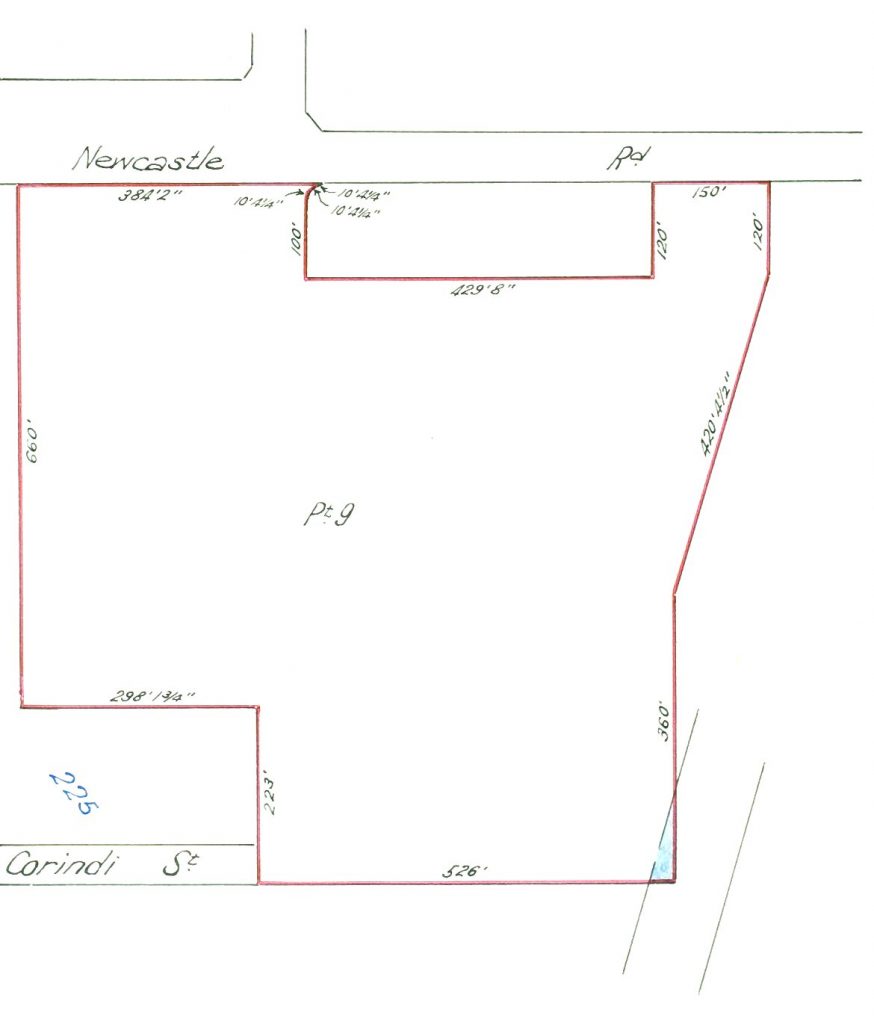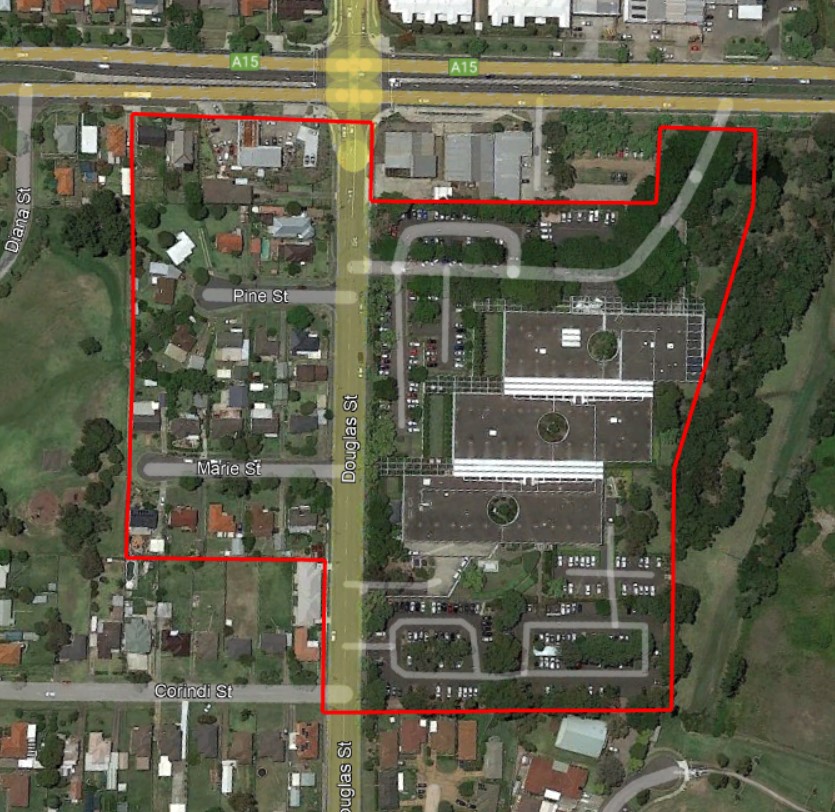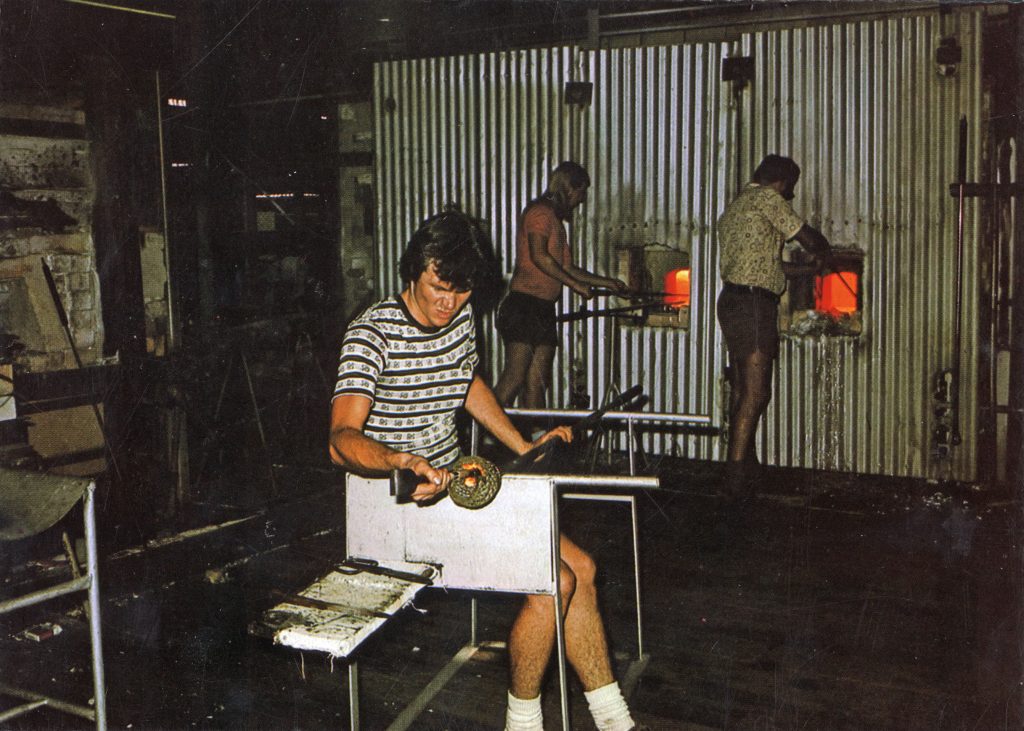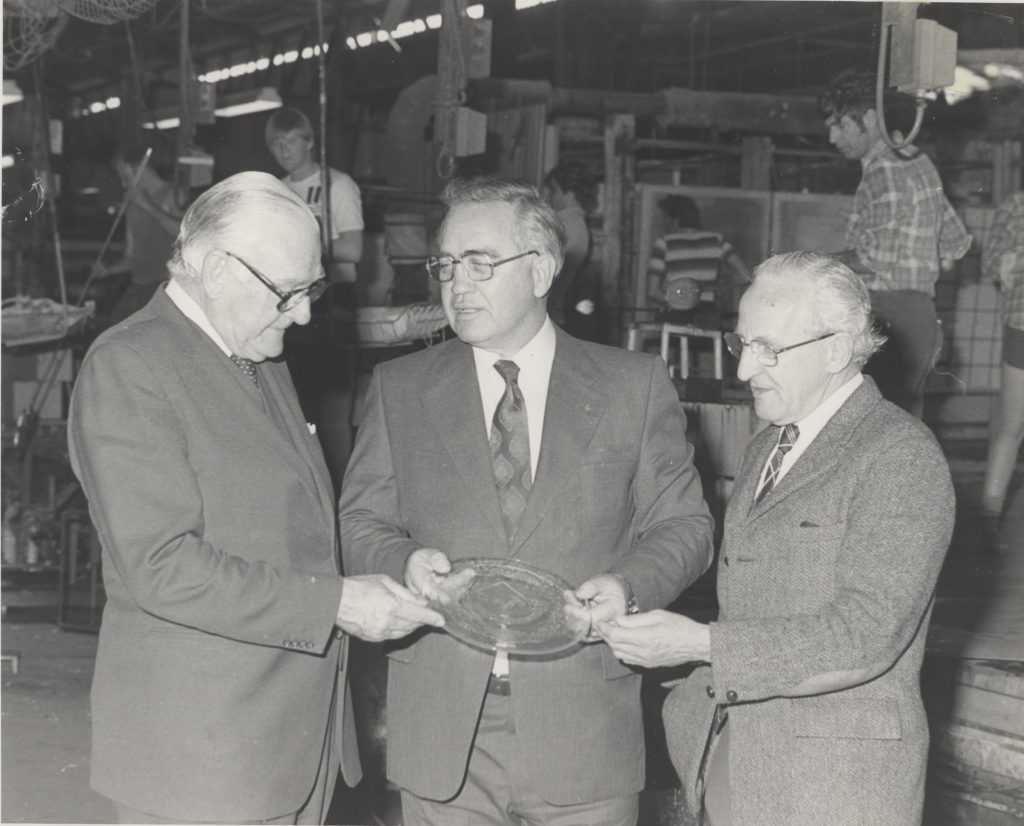This month marks 125 years since the Drill Hall in De Vitre Street Lambton was formally opened in 1899.
In 1885 the government authorised the formation of a Volunteer Infantry Corp in the town of Lambton, to be part of the 4th Infantry Regiment of the northern district. The regiment was expanded in response to the threat of war between England and Russia, with the Newcastle Morning Herald and Miner’s Advocate noting that “when Russia is ready for war she will easily find an excuse for making it.”
Initially the volunteers had no permanent base and they performed parade drills in Lambton Park and shooting practice at a rifle range in North Lambton. In October 1898 the Government reserved a block of land in De Vitre Street, and contracted Mr Reffshaw of Sydney to erect a large drill hall with adjoining offices. The official opening was celebrated with a military social on Saturday 3 June 1899.
The hall became the training depot for the Lambton volunteers, and its importance increased with the outbreak of World War 1. On 8 December 1915 a recruiting campaign march began in Narrabri, with 43 men setting off to walk 300 miles to Newcastle. Nicknamed the “Wallabies”, the marchers held meetings in each town along the way to persuade young men to enlist and join the march. On 7 January 1916, the “Wallabies”, now numbering over 200, reached Lambton and were accommodated in the drill hall. Meetings held that evening added fifteen recruits to their number. In World War 2 the drill hall once again played a crucial role, and was used for recruiting, medical examinations, and training of new enlistments. After the war it was leased for various purposes, including a gymnasium for the National Fitness Committee, and headquarters for the Forestry Commission. The army began using the hall again in 1955, and later the site was used as a Telecom depot. The drill hall was demolished in 1990 and replaced with townhouses.
There are not many photos of the old Lambton Drill Hall. However given the size of the building it often appears in the background of general photos of Lambton.
A number of additions and alterations were made to the Lambton drill hall over the years. The Fort Scratchley archives has a plan showing “the “Proposed Additions & Improvements”. It is hard to tell with the quality of the scan, but the date adjacent to the signature appears to be “20.12.25”. If so then this plan relates to the “erection of additional offices” for which five tenders were received in July 1926. The successful tenderer, announced on 11 August 1926, was H B Sudlow of New Lambton, with a price of £284.
| Article Date Event Date | Notes |
|---|
| Lambton Volunteer Rifle Corps - 1866 to 1870 |
| 8 Sep 1866 | "On Thursday evening next, a meeting will be held at Mr. Dent's, Northumberland Hotel, for the purpose of forming a Volunteer Rifle Corps to act in conjunction with Waratah." |
| 15 Sep 1866 | Public meeting resolves "that the inhabitants of Lambton join those of Waratah in forming a volunteer rifle corps, to be named the Waratah and Lambton volunteer rifle corps." |
| 22 Sep 1866 | "The volunteers held their committee meetingin the large room of the Northumberland Hotel … a sub-committee to draw up a memorial tendering their services to the Government as a Volunteer Rifle Corps. The corps now numbers at Waratah, fifty-four, and Lambton 31 ; total, 85 strong." |
| 7 Nov 1866 | "There is some prospect, we understand, of a company of sappers and miners, in connection with the volunteer movement, being formed at Waratah and Lambton. The new corps would take the place of the rifle corps recently established, and would certainly be more in character and better adapted, we should fancy, to the major portion of the population. The suggestion, we are informed, originated with Mr. M. W. Lewis, Esq., who has kindly offered to instruct the corps, should one be formed, in the science of fortifications." |
| 1 Nov 1870 | Review of Hunter District rifle corps, with Lambton included in list. |
| 16 Apr 1878 | "A public meeting of the inhabitants of Lambton and neighbourhood was held in the Druids' Hall, Lambton, on Monday evening, for the purpose of taking into consideration the advisability of forming a Volunteer Corps for the defence of the port, in the event of war taking place."
In the period 1871 to 1884, there appears to be no other mentions of a volunteer corp at Lambton until the establishment of the Infantry corp in March 1884. |
| Lambton Volunteer Infantry Corp, H company of 4th Regiment - 1884 to 1914 |
| 7 Mar 1884 | "His Excellency the Governor, with the advice of the Executive Council, has been pleased to approve of the Infantry in the Northern District, at present consisting of four companies, with head quarters at Newcastle, West Maitland, Singleton, and East Maitland respectively, forming an Administrative Regiment, to be styled the "4th Regiment of New South Wales Volunteer Infantry." |
| 7 Feb 1885 | "His Excellency, with the advice of the Executive Council, has given authority for the formation of a Volunteer Infantry corps in the town of Lambton, with a captain, first and second lieutenants, colour-sergeant, three sergeants, four corporals, two buglers, and fifty-three privates." |
| 7 May 1885 | "THE fact of a meeting having been held in the Protestant Hall on Tuesday evening to inaugurate a new Volunteer Infantry Corps, reflects great credit upon those citizens who were present. The probabilities of an immediate war between Russia and England do not appear so imminent as they were a short time back, but it cannot for one moment be supposed that the matters in dispute are finally disposed of."
" … when Russia is ready for war she will easily find an excuse for making it."
"There were 1000 or 1100 volunteers enrolled in and around Newcastle, Lambton, Wallsend, Maitland, etc., which he believed were to defend Newcastle in case of any outbreak." |
| 19 Aug 1885 | William Francis Xavier Byrne gazetted first lieutenant of the Lambton corps of volunteer infantry. |
| 26 Nov 1887 | "The Lambton corps of the Volunteer Infantry will parade on the Reserve at 4.30 o'clock this afternoon, for practice in the march-past competition at December 1st." |
| 19 Jul 1888 | First mention of "H company" of the volunteer force at Lambton. |
| 25 May 1892 | "The H Company 4th Regiment Infantry enlivened matters considerably in the town by parading the principal streets. The men were commanded by Captain J. B. Nash and Lieutenant S. Williams, and presented a fine appearance. They afterwards were put through several manoeuvres on the parade ground in the park, and at noon fired three volleys in succession in honour of her Majesty. The men in the afternoon again mustered at the shooting range, North Lambton, when the rifle corps match, already in progress, was continued." |
| 16 Feb 1895 | Request to council "From Dr. J. B. Nash, captain 4th Regiment Infantry, asking for the electric lights to be put on in the rotunda from the 1st instant until further notice, for the purpose of holding recruit drill on the park." |
| 22 Oct 1898 | "RESERVES FROM SALE FOR MILITARY PURPOSES … County of Northumberland, parish of Newcastle,
containing an area of 1 rood 27 perches. The Crown Lands within the boundaries of measured portions 844 and 845 of 1 rood 4¾ perches, and 22¼ perches respectively." |
| 24 Dec 1898 | Invitation to tender for erection of Lambton drill hall. |
| 13 Feb 1899 | "Mr. Reffshaw of Sydney, the contractor for the drill hall to be erected in De Vitre-street, has commenced operations, and the men are now at work laying the concrete foundations." |
| 2 Jun 1899 | "THE Adjourned MILITARY SOCIAL in connection with the Opening of the Lambton Drill Hall will be held THIS FRIDAY NIGHT." |
3 Jun 1899
2 Jun 1899 | "A military social under the auspices of the Lambton Company, 4th Infantry Regiment, was held to-night in celebration of the opening of the new drill hall at Lambton Major Nash presided." |
28 Sep 1903
26 Sep 1903 | "A successful social promoted by the members of the Lambton Company, 4th Regiment, was held in the drill hall on Saturday evening." |
| March of the "Wallabies" - December 1915 to January 1916 |
| 24 Dec 1915 | "The Sergeant Major outlined the programme, and said that the Wallabies now numbered 130, and he hoped
they would enter Cessnock on New Years Day about 160 or 170 strong, and number 400 when they reached Newcastle. Offers were accepted of the drill halls at Lambton and Newcastle for the accommodation of the men." |
8 Jan 1916
7 Jan 1916 | "The arrival of the Wallabies at Lambton was the occasion of great rejoicings among the residents, and will long be remembered as an event that will prove to be historical."
"On their entry into Elder-street they were greeted with cheers by a large crowd of residents. The march proceeded to the drill hall, where the men indulged in a wash.
Fifteen recruits were obtained during the evening, and among the volunteers was Mr. T. Pease, a former delegate of the Colliery Employees' Federation.” |
| 8 Jan 1916 | "The 'Wallabies' nearly 200 strong, this afternoon completed the Newcastle section of their long and successful recruiting march from Narrabri to Sydney. They left Lambton after breakfast this morning and marched through New Lambton and Broadmeadow to Hamilton … After lunch they completed the two miles to town." |
10 Jan 1916
8 Jan 1916 | The "Wallabies" march from Lambton to Newcastle. |
8 Mar 1916
7 Mar 1916 | March of the "Wallabies" from Wallsend to Lambton. |
| Between WW1 and WW2 - 1919 to 1939 |
| 21 Jun 1926 | "Lambton Drill Hall.—Erection of additional offices. Five tenders received and referred to Works Director." |
| 11 Aug 1926 | Successful tenderer for additions to Lambton drill hall, H. B. Sudlow, New Lambton, £284/15/-. |
19 Aug 1926
17 Aug 1926 | Lambton council meeting, letter from "Defence Department (per D. Watkins, M.H.R), with regard to the erection of a miniature rifle range in the drill hall ground, Lambton. It was pointed out that similar ranges were erected through out the Commonwealth, and that few complaints had been received. The department would, however, be glad to receive any suggestion which would adjust the matter, provided that any such proposal would not interfere with military training requirements. Alderman Smith moved that the department be asked to remove the range to the western side of the drill hall." |
5 Oct 1927
9 Oct 1927 | Lambton Drill Hall used for polling place in NSW State election. |
26 Jan 1933
28 Jan 1933 | "The official opening of the Sergeants' Mess, of the 35/33rd Battalion at Lambton Drill Hall will be observed by the mess members' on Saturday night." |
| 27 Jan 1937 | Tenders for repairs and re-roofing of Lambton Drill Hall. Lowest tender received, S. Gabriel, £309/17/6. |
| World War 2 - 1939 to 1945 |
| 2 Jul 1940 | "In view of the number of dispatch riders who have left the regiment to enlist with either the A.I.F. or R.A.A.F., a number of vacancies exist for motor-cyclists with their machines. Interested motor-cyclists should also apply at the Lambton Drill Hall next Saturday." |
| 3 Sep 1940 | "Vacancies still exist for trained cooks, preferably with military experience, also batmen and drivers. Applicants must be between 18 and 20, or between 25 and 45, and should apply at the Drill Hall, Lambton, on Tuesday nights at 7.30 o'clock." |
| 1 Aug 1941 | "There will be a full-day parade of the Newcastle troops of the 16th Machine-gun Regiment at Lambton Drill Hall to-morrow." |
| 7 Jan 1942 | Medical examinations of Class 2 call-ups to take place at Lambton Drill Hall. |
| Post World War 2 |
| 10 Jan 1946 | "The first gymnasium organised by a National Fitness Committee in the Newcastle district is to be opened
in the Lambton Drill Hall. Secretary of Lambton National Fitness Committee (Mr. R. Hitchcock) said it had been decided this week that the gymnasium would be open two nights a week for boys and youths, and two nights for young women and girls." |
| 10 Apr 1946 | "Hamilton Division of the St. John Ambulance Brigade had offered to conduct first-aid classes at Lambton Drill Hall. Members of the division will be asked to attend a meeting on April 29 to outline arrangements for the classes. The gymnasium classes will be under Mr. and Mrs. W. Hinton. The gymnasium is open for boys on Monday and Thursday nights and for girls on Tuesday and Friday nights." |
| 25 Sep 1947 | "Newcastle has no more 'drill halls.' In future they will be known as training depots for members of
Australia's Citizen Army. The new name is part of a drive to brighten the training of the citizen soldier.
Added facilities to make training depots attractive for young men included the provision of messes and
recreational amenities, the Newcastle Area Brigade Major (Major A. C. McInnes) said yesterday." |
| 28 Apr 1949 | "Offers are invited for the leasing of the Drill Hall property situated in De Vitre-street, Lambton, New South Wales, for a period of three years." |
| 5 Jan 1950 | Request made "to the G.O.C. Eastern Command (Lieut.-General Berryman) to have the Lambton Drill Hall made available to the council for use as a distribution centre for the [Lambton branch] library. The Lord Mayor said the drill hall could be used to house books and provide room for the staff to catalogue and repair them." |
| 10 Feb 1951 | The Forestry Commission seeking a site for its headquarters in Lambton. |
| 6 Mar 1953 | "Lambton Drill Hall, which has been used for some time by the Forestry Commission, was returned to the Army this week. It will be used as headquarters of a City of Newcastle Regiment company." |
30 Jun 1955
27 Jun 1955 | "Thieves stole three sub-machineguns and five .303 rifles from an army drill hall at Lambton (Newcastle) on Monday night." |



















